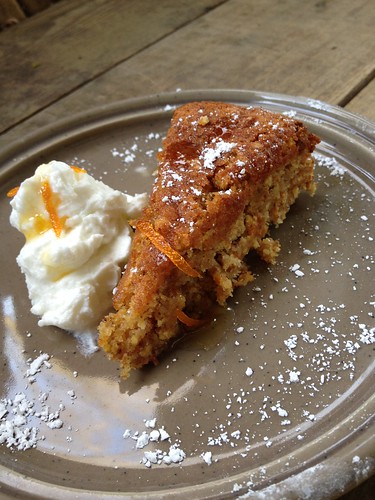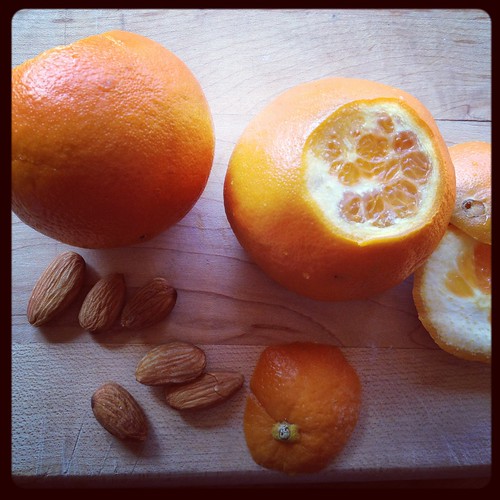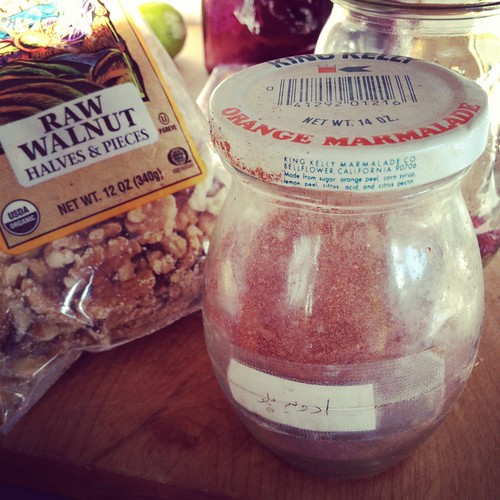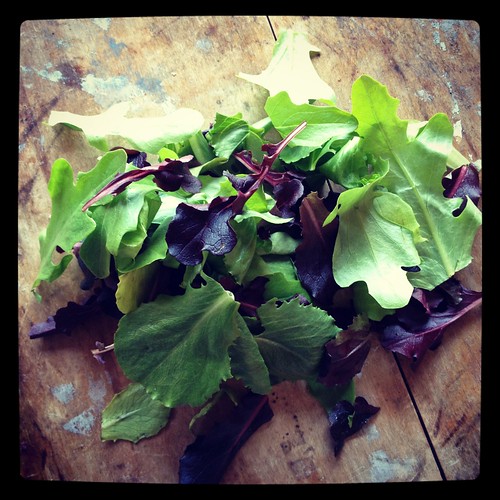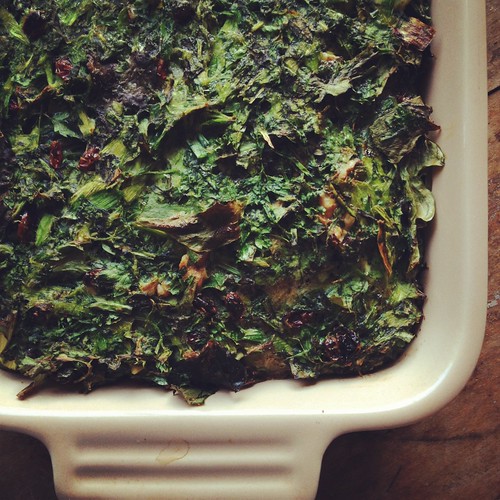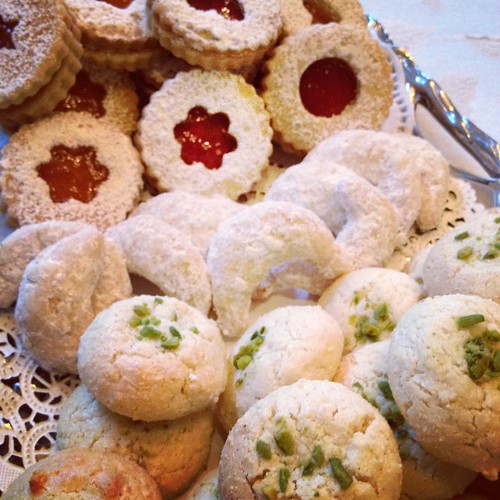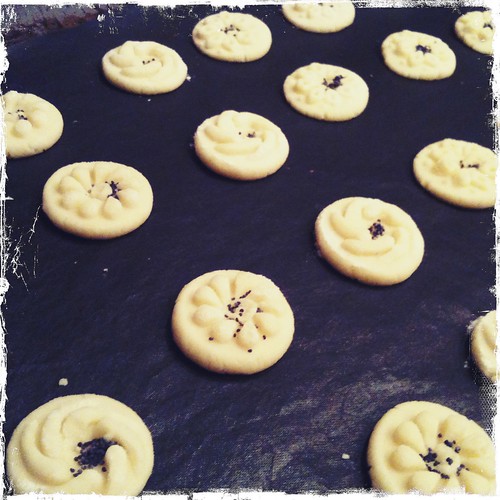Sorrel Sauce for Salmon- to ring in a New Year
 Sunday, March 15, 2015 at 10:05PM
Sunday, March 15, 2015 at 10:05PM  Sorrel sauce, Banamak Recipes for New Year
Sorrel sauce, Banamak Recipes for New Year
I really meant to update this blog and post a million recipes (mostly cookies, sorry), but life and work got the best of me. I’m happy to say that I’m ready to share again. I was motivated by the invitation to contribute to a round up of NoRuz recipes (see link at the bottom of this post) by a great group of Persian Food bloggers. I hope you get a chance to read and comment on them all this week.
Last year, my mom and I were featured in an article on Persian New Year traditions in Edible Seattle. We talked about some of our family food traditions and rituals. I was honored to have my kuku recipe included in the print edition. The on-line edition does not seem to have the recipe available, but you can find it here.
Much like American Thanksgiving, the NoRuz menu is set in tradition. Fish, sabzi polo and kuku are essential components; the other items can change from year to year. For the fish course, many Iranians serve a smoked Lake Michigan whitefish or another firm fleshed white fish. Growing up in Seattle in the 70s and 80s, smoked whitefish was hard to find. My mom served cod, snapper or sole filets as our fish course. Later, she served whole butterflied salmon as our family and circle of friends grew. These days whitefish filets are easily found at Persian stores or Costco(!) in the weeks running up to New Year.
I still serve salmon to my guests, usually a white king if we can get it. I’ve moved away from my old standby of baking the salmon with white wine, herbs and onions to making a simple green sorrel sauce that pairs beautifully with the salmon and the rest of the menu as well.
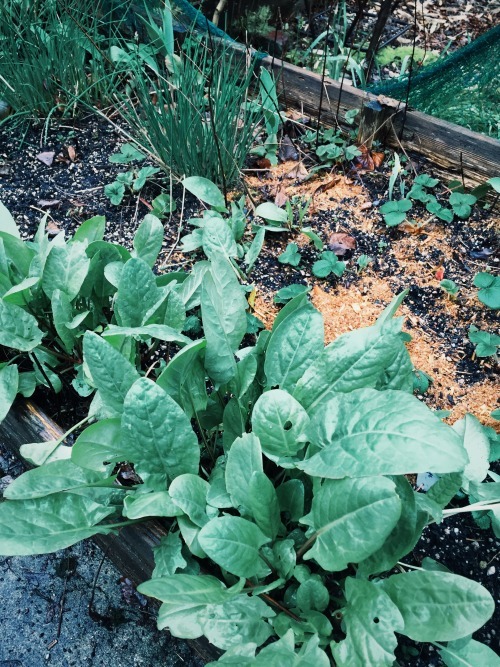 Garden sorrel, just starting to go gang busters, just like zuchinni
Garden sorrel, just starting to go gang busters, just like zuchinni
Sorrel is an amazing herb to have on hand. I highly recommend coming over here and digging some up (kidding!) or buying a plant to have at home. It grows like a weed and tolerates being neglected. As for the taste, I love the way it peps up green salads and makes a lovely spring soup.
Sorrel sauce with salmon is a classic dish and there are a million recipes out there you can use. I don’t use one in particular, but I do like to extend and temper the sharp and citrusy taste of the sorrel with a little spinach and peppery watercress, so that is my twist on the classics.
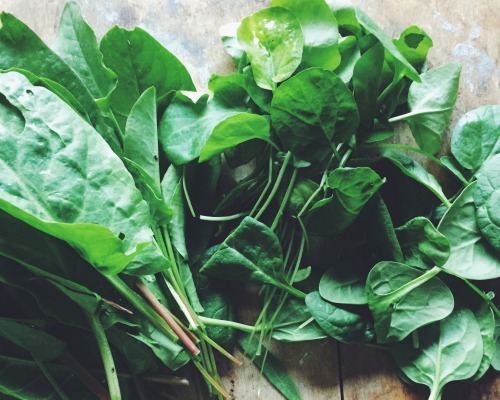 Holy Trinity - Left to Right - sorrel, watercress, baby spinach
Holy Trinity - Left to Right - sorrel, watercress, baby spinach
Sorrel sauce for our New Year’s Salmon –serves 4 to 6
Notes: The New Year meal should come together pretty fast if you are an organized cook. The sauce will be much better if it is made at the last minute. I recommend setting up your mise with everything measured, minced, chiffonaded and ready to go before your guests arrive. You can save a little more time by sautéing the shallots before hand and just warming them up before you start adding the greens. If you can get your sous-chef to deal with getting guests to the table and all the tahdig out of the pot before you are done making the sauce, high five to both of you.
If you have picky eaters, I would serve the sauce on the side so they can try it first. I also recommend adding the liquid to achieve your desired consistency. Some folks like to spoon the sauce and have it not slide off the filets, and others like a more liquid presentation. You can puree the sauce, but really, you want to be sitting with your guests as soon as possible, so skip it.
1 bunch of sorrel, washed, dried and stems removed
½ bunch of watercress, washed, dried and stems removed
3 oz or ½ package of baby spinach, washed and dried
1 shallot, minced
3 T. unsalted butter
4-6 T heavy cream, half and half or crème fraiche
Salt and pepper to taste
Chiffonade (Chow's video link) sorrel, watercress and spinach, but keep them separate as they’ll be added individually. Set aside until needed.
Melt butter in a heavy skillet. When melted, add shallots and sauté until transparent. Lower heat and add spinach, cook until just wilted, then add watercress and cook until it starts wilting. Lastly, add sorrel and cook until it wilts. The sorrel will turn a most unfortunate shade of olive while the spinach and watercress still look green, but it should taste pretty awesome.
Remove the skillet from heat and stir in cream, half and half or crème fraiche slowly to reduce the chance of curdling and the sauce is at your desired consistency. Season to taste.
Serve at once either on the side or spoon over fish filets.
Nooshe-jan
 Nowruz,
Nowruz,  new year,
new year,  persian food blogging,
persian food blogging,  persian new year recipes,
persian new year recipes,  salmon,
salmon,  sauces,
sauces,  sorrel in
sorrel in  no ruz,
no ruz,  recipes
recipes 





